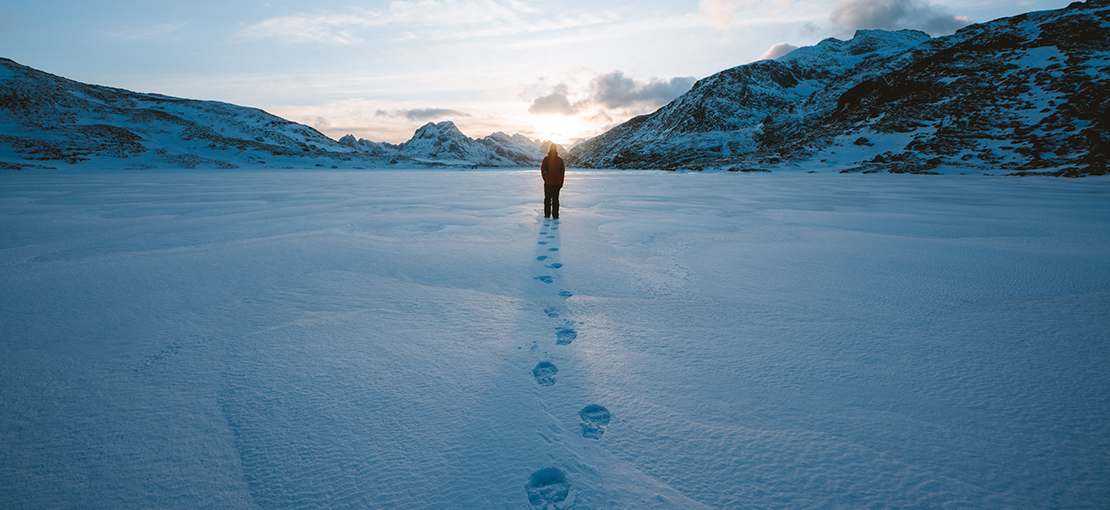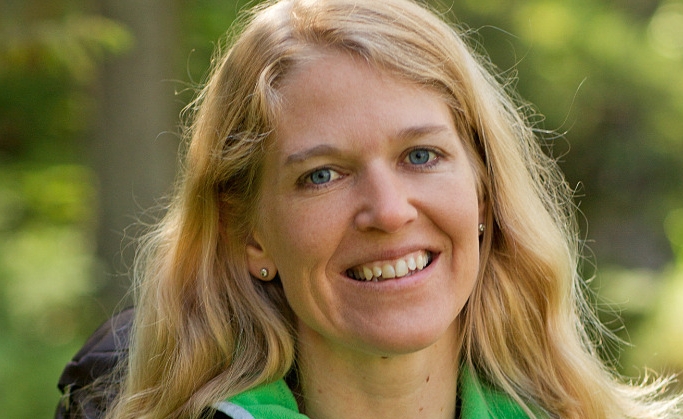
VAUDE Carbon Footprint at our Tettnang Headquarters
Climate-neutral since 2012
VAUDE wants to be a completely climate-neutral company. We have already achieved this at the company headquarters in Tettnang. The next milestone is the VAUDE climate targets for the supply chain. More information here.
Here we describe how climate neutrality works.
This page summarizes the most important data and key figures from our carbon footprint assessment for the company headquarters in Tettnang. The full document can be downloaded here.

Decoupling emissions from corporate success
Emissions will never be completely avoidable as long as our global economy is based on fossil raw materials. We have already achieved some success in reducing the emissions generated by VAUDE. Thanks to climate compensation, VAUDE is already climate neutral in mathematical terms.
It is really an accomplishment when a company can grow faster than its emissions output. This is what is meant by ‘decoupling’.
For example, the emissions of our Manufaktur: when they don’t grow faster than our production volume (or even decrease) thanks to better utilization of the machines, less energy consumption or higher material efficiency. Or our emissions per employee: the same number or more employees, but without higher amounts of electricity, water, material consumption, etc. – that is our goal.
Emissions per employee pro and per tonne of production output
Create your own infographicsTotal emissions have decreased
Overall, we have been able to significantly reduce emissions.
The biggest factors in this are material consumption in our Manufaktur. We intend to exert even greater influence by increasing our material efficiency: better utilization of the width of our materials and textiles for the individual pattern pieces and through the selection of more eco-friendly materials. More on the conversion of VAUDE products to biobased and recycled materials here.
We have already explained the subject of "decoupling" above. Total emissions in 2019 were roughly at the same level as in 2015. Since 2015, however, VAUDE has grown enormously - more employees, more space, more cars, more production, more sales, and so on. We were able to significantly reduce emissions in many areas (see below). Reducing emissions even further as the company grows remains a real challenge. Read more about VAUDE's sales development here.
How this affects energy consumption, for example, is shown here.
Read more about VAUDE's sales development here.
VAUDE Emissions in Detail
Absolute quantity of emissions in tonnes of CO2e
Create your own infographicsDistribution of VAUDE emissions 2017 in tonnes of CO2e
Create your own infographicsEmissions in annual comparison in tonnes of CO2e (carbon dioxide equivalents)
Create your own infographicsEmissions from business trips and commuting
Employee mobility is a hard nut to crack. Although VAUDE has a Mobility Concept that is often cited as ‘best practice’, make up a major proportion every year. More on our mobility concept here.
We achieved our goal of reducing emissions from employee mobility by 10 % by 2020 compared to 2015 for the first time in 2018. Now we have to reduce emissions even further despite higher sales. As a new target, we have agreed to reduce emissions from employee mobility by an additional 25 % by 2024 compared with 2019.
More about our corporate growth here.
Information on energy consumption and emissions regarding corporate growth can be found here.
Hotel accommodation is also a source of CO2 emissions
Create your own infographicsStill more figures… Emissions in detail
Information on energy consumption and emissions in relation to company growth can be found here.
Energy: electricity and gas consumption
Create your own infographicsPackaging: cardboard and foil
Create your own infographicsConsumables
Create your own infographicsTransport: Delivery transportation of VAUDE products
Create your own infographicsAt present, we only include transport figures that relate to the materials and products that are processed and manufactured at VAUDE Manufaktur in the carbon footprint. Read more here.
And here you can find background information for VAUDE Logistics.
VAUDE Manufaktur with an excellent CO2 Balance
After a lightning strike in 2015, we built a new production facility for our Made in Germany products in 2016. Environmental protection played an important role here. We opted for a timber construction method that is the most environmentally friendly alternative from an emissions perspective, both during production and throughout its entire life cycle.
Life cycle analysis of different construction methods for the VAUDE Manufaktur
Create your own infographicsCarbon Footprint using the Greenhouse Gas Protocol
Calculation of emissions follows these myclimate principles:
- Scope 3 emissions are shown in the carbon footprint in the relevant categories as CO2 equivalents (Total Scope 3: 3,745.2 t CO2e).
- All greenhouse gases are included in accordance with IPCC in the carbon footprint.
- Biogenic Scope 3 emissions amounting to 35.8t CO2e are reported.
- Emission categories/activities included: Business travel and overnight stays, commuting, consumables, electronics, production materials, deliveries, waste, water and website (electricity external computer center).
- The base year for GRI reporting is 2014. (Starting balance for GRI reporting). Scope 3 emissions rose in 2015 due to a new calculation method and reporting by VAUDE's transporters, fell in 2016, rose slightly in 2017, fell sharply in 2018 and fell again by 4 % in 2019. 2014: 3757 tCO2e, 2015: 4491 tCO2e, 2016: 4422 tCO2e, 2017: 4522 tCO2e, 2018: 3674t CO2e, 2019: 3475 tCO2e).
- The basis is the Greenhouse Gas Protocol (WRI). If assumptions are made, they are listed in the source.
- The source in almost all cases is ecoinvent 2.2 (LCA database) with GWP: 100a from IPCC (2007). Individual sources are each listed in the carbon footprint.
- Consolidation approach of operational control (in accordance with WRI: ghg protocol)
Emissions based on scopes
Create your own infographics| GRI: | 305-1 |
| GRI: | 305-2 |
| GRI: | 305-3 |
| GRI: | 305-4 |
| GRI: | 305-5 |




